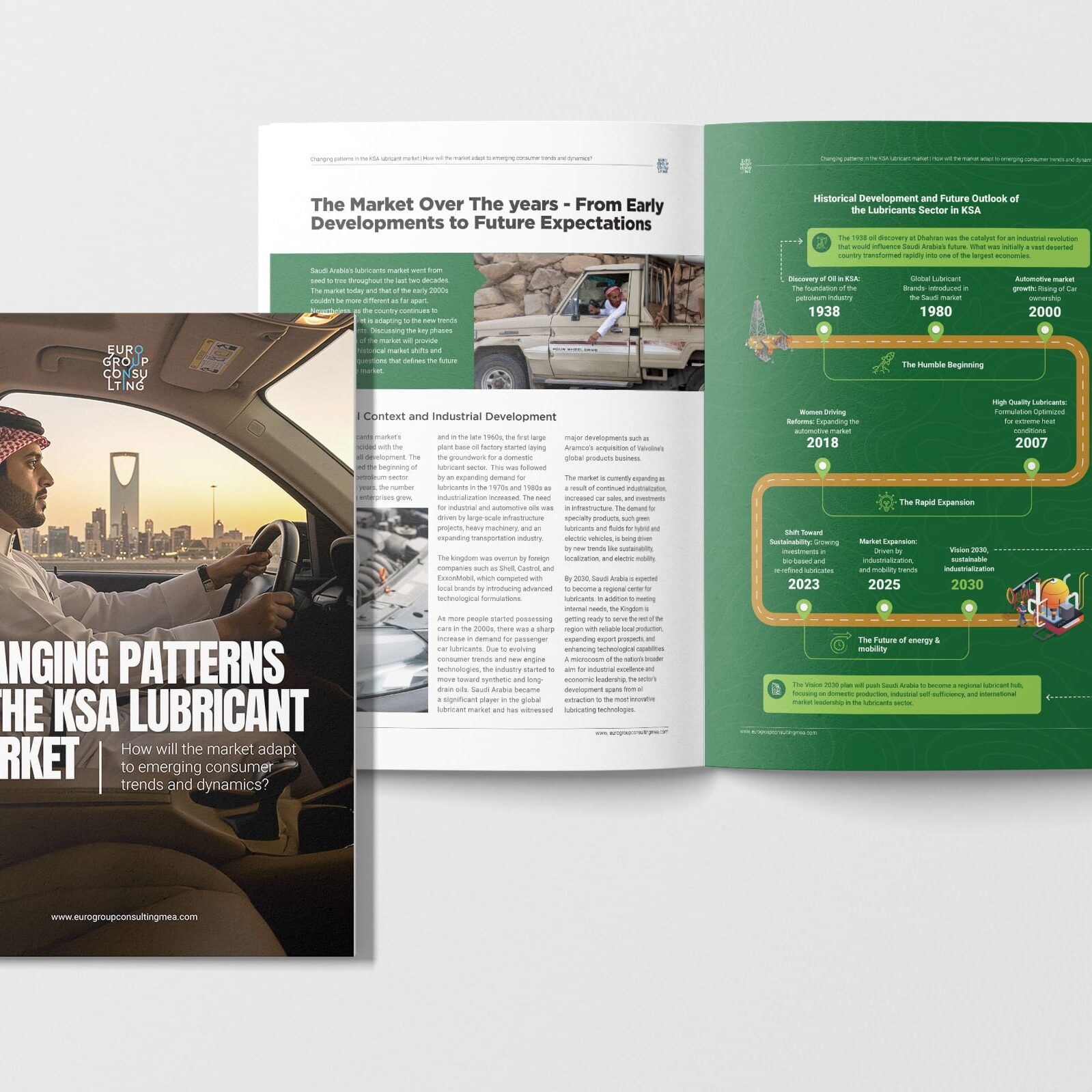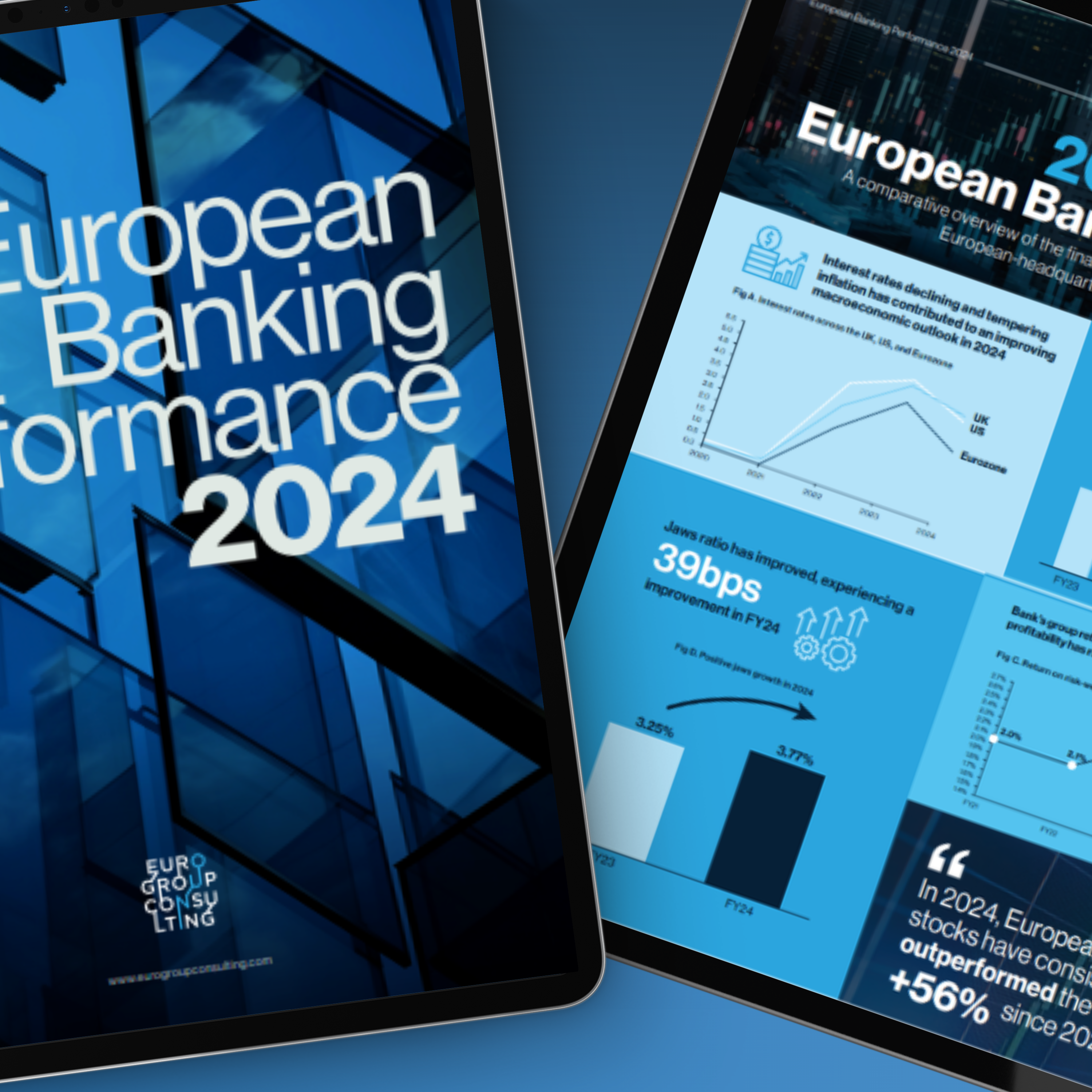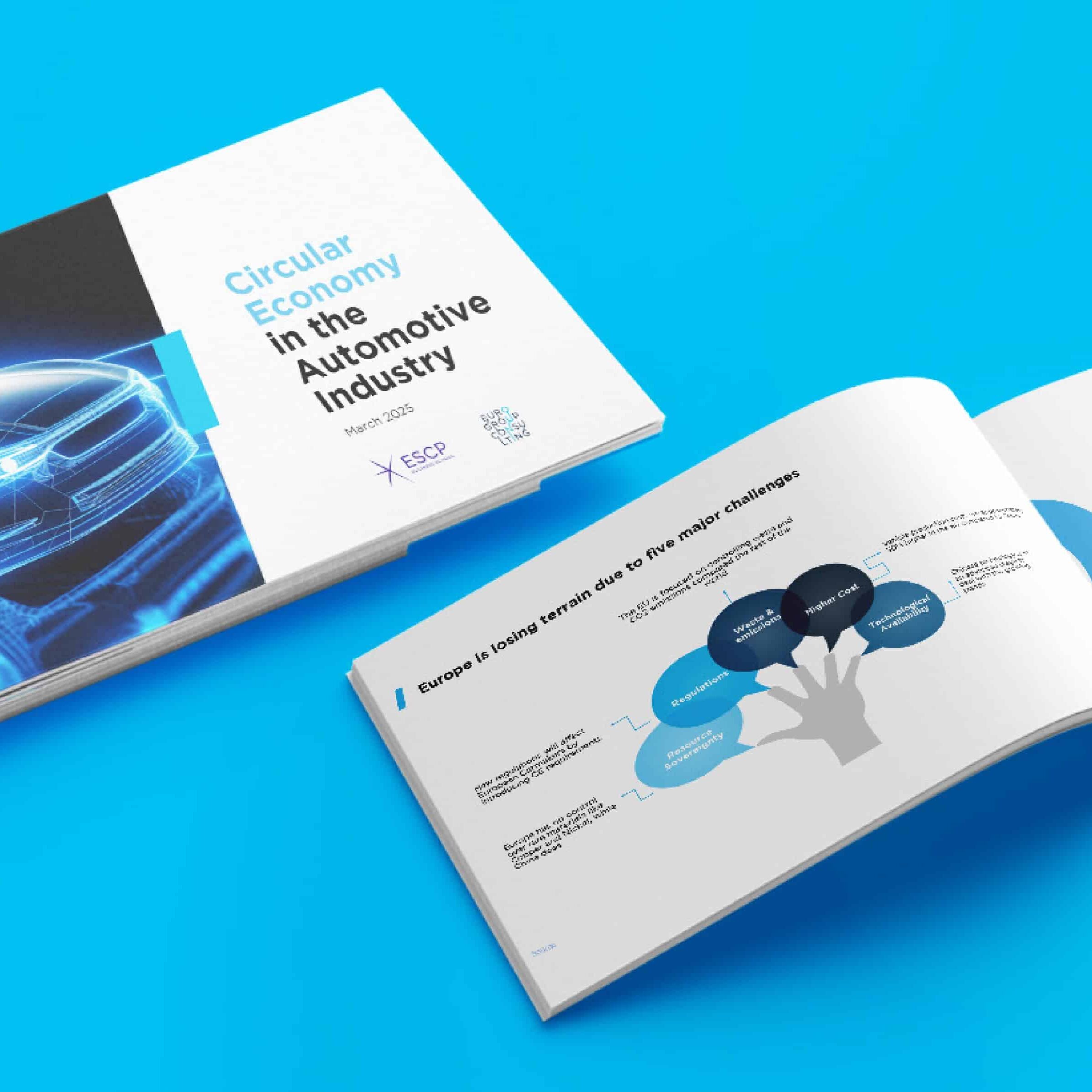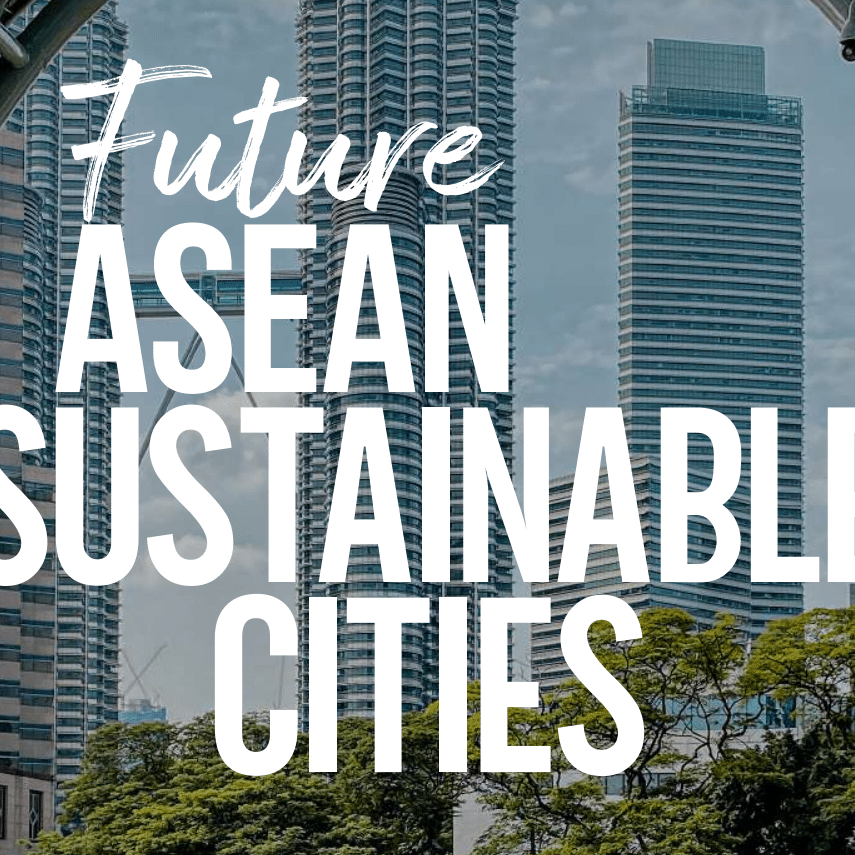Faced with the urgency of the climate crisis, the “Green Deal for Europe” aims to achieve carbon neutrality by 2050. This ambitious project is currently facing successive uncertainties caused by years of pandemic, soaring energy prices, and the war in Ukraine.
However, the ongoing transition toward a low-carbon economy also represents a tremendous driver for innovation, energy security, and the creation of green jobs.
What levers can be implemented to accelerate this transition and collectively increase the chances of success?
In a note addressing this question, our experts identify four major courses of action.
With a strong belief that increasing the connections between the political and economic spheres should drive a division of roles: on one hand, regulatory objectives set at an institutional level, and on the other, the question of means to achieve them left to the companies.
Download the analysis
To download, please fill the form below
1. MOVING TOWARDS A BALANCED, LOW-CARBON ENERGY MIX ACROSS EUROPE
The 6th IPCC Report is clear: the climate emergency is more pressing than ever. Making a rapid and pragmatic energy transition is an absolute necessity. In light of this situation, the European Union has presented a series of measures, the “European Green Deal”, with the stated aim of reaching carbon neutrality by 2050. This major project has come up against the successive uncertainties engendered by years of Pandemic, the energy price inflation and war in Ukraine. While the European Union had made natural gas one of the pillars of its energy transition, it must now break away from its dependence on Russian gas at breakneck speed, thereby creating an air gap for other exporting countries.
Despite these upheavals, Europe must retain the collective strategy that characterises its Green Deal. Reaching carbon neutrality means moving from a system centred around fossil fuels (two thirds of the energy consumed in Europe), to a mix made up mainly of so-called “green” energies. This cannot be achieved without considering energy disparities among European countries. The logic of proportionality and solidarity between member states must persist and be revisited in light of the current geopolitical situation. A lack of cohesion within the bloc could lead to some of the 27 members withdrawing into their own countries, which would weaken European credibility internationally and minimize the European Green deals chances of success.
To avoid such a scenario, it is essential that the future energy mix includes multiple sources. While it seems obvious that the proportion of fossil fuels should fall, a poorly planned and dogmatic transition would be counterproductive. So called decarbonised energies all present drawbacks that need to be anticipated to reach a viable mix by 2050. In addition to the intermittency often cited when it comes to solar and wind energy, alternative energy sources raise, for example, issues of sovereignty, technological intensity, or maintenance. The goal is therefore to efficiently bring together all sources and means of energy production in order to optimise their advantages.
This optimisation also comes from the guarantee of a fair balance between offer and demand at a continental level. A greener and more diverse European mix means considering the strength and weaknesses of the different members to ensure the resilience and efficiency of the network.
To avoid imbalances between states, Europe absolutely needs to integrate redistribution logics among the 27 members by playing on “controllable” and “non-controllable” energy. The installation of an interstate intelligent electrical network would be, for example, a way of balancing precisely and in real time the electrical production of the whole continent.
This type of long-term planning is the basis for rebuilding energetic stability, conducive to growth and production development. The Green deals initiatives are a first step, but it is now key to create an EU-wide consensus on the means to achieve the goals set for 2050 and on the state’s specific roadmaps.
2. FOR A GENUINELY INCENTIVIZING CARBON PRICE
Carbon pricing is one of the regulatory measures available to member states to accelerate their decarbonization. It generally takes the form of an additional tax to the selling price of a product or service according to their carbon intensity, or of the creation of a carbon market leading to the pricing of emissions. While today about a fourth of global Greenhouse gas emissions (GES) and 60% of the world GDP are covered by a carbon pricing mechanisms, the measure comes up against a few limitations.
First of all, these statistics do not consider the price of the metric ton carbon dioxide equivalent according to the regions or markets studied. Nowadays, three quarter of the pricing mentioned establish the ton price at less than 15$. For the measure to have a real environmental impact, this value should be between 80$ and 100$.
More structural problems should also be considered. Carbon pricing is only viable on a global scale. In a globalised economy, regional or national pricing weakens the local market to the detriment of markets that do not apply a similar mechanism. The unilateral implementation of adjustment measures is tempting to offset this imbalance, but it involves economic issues with sometimes political repercussions. This is illustrated by the Carbon Border Adjustment Mechanism (CBAM) implemented by the European Union (EU) in its Fit-for-55 program. Aiming to adjust the price of goods imported from non-member countries, this measure has been heavily criticized internationally for its protectionist nature.
Secondly, it is illusory to imagine a single carbon price worldwide, as production costs and living standards vary greatly from one region to another. Such a measure would put at a disadvantage southern hemisphere countries and would provide little incentives for northern ones. Finally, setting a price on carbon has a social and political cost. In the case of a carbon tax, consumer prices are directly affected, and resistance can be fierce. A good environmental taxation must therefore include the reduction of other taxes or charges so as not to weaken purchasing power and business competitiveness.
Despite these drawbacks, the carbon tax is widely promoted internationally. Last May, the IMF recommended listening to pricing mechanisms, highlighting the creation of new revenues for states. The trend seems to be well underway and, in many cases, will increase constraints for economic players. In addition to the financial stakes, these constraints will also be administrative or logistical in nature: the European CBAM requires, for example, players to provide proof of the carbon content of products imported from third countries. It is vital that companies support this paradigm shift by being initiative-taking in the way they adapt to new regulations. Political, economic, and social risks induced by the carbon tax will be better anticipated if the business world shows itself capable of providing solutions to the current point of tensions with the ultimate aim of minimizing the repercussions on their populations.

3. FOR AN INDUSTRIAL POLICY CENTERED ON ENERGY AND ECOLOGICAL TRANSITION
In 2020, the industry sector (excluding the energy industry), accounted for around 12% of greenhouse gases emissions in the European Union, and represented 23,5% of its GDP, making the EU the world’s third largest industrial power behind China and the United States. The competitiveness between these three powers is in full swing. The European union, with its non-interventionist liberal doctrine, struggles to keep pace with its competitors, whose massive industry and decarbonization funding policies are greatly favouring their ecological transition.
In the European Union, the manufacturing industry reduced its emissions by 40% between 1990 and 2020 (according to EEA 2020). While the reduction in emissions reflects the efforts made by industry players to implement new processes with a better energy efficiency, it sometimes hides an increase of “exported pollution”, due to an increasing number of production relocations and rising imports, heavying the carbon footprint of the transport sector.
Nowadays, the attractiveness and competitiveness of the European Union against its rivals relies on its capacity to decarbonise efficiently and rapidly by looking at the ecosystem as a whole, from end to end within the value chain. For a successful ecological transition and to achieve carbon neutrality by 2050, the EU must therefore rethink its industrial policy with these decarbonisation objectives in mind.
An industrial policy centred on ecological transition would ensure the sustainability of the sector by activating several levers:
- Stimulating innovation through the search of technologically sustainable solutions (e.g., carbon storage, energy efficiency, new means of transport…) thus helping to reduce environmental impact.
- Creating green jobs by developing new sectors related to the environment (renewable energy, waste management, water management…). This boom in new professions contributes to green growth.
- Improving competitiveness through the adoption of sustainable practices that enable better adjustment to new ecological regulations and obligations, thus placing companies in a better position than their less green competitors. The development of standards on the ecological transition is increasingly encouraging companies to think in terms of the ecosystem as a whole rather than just internally, and to decarbonize their value chain from start to end. The greenest companies are starting to include environmental criteria’s as key strategic and performance evaluation standards.
- Accessing investment from financial players and consumers who are increasingly concerned about the ecological sustainability of companies. Indeed, the ecological risk is a growing financial risk for banks and investors, who are gradually abandoning carbonized investments in favour of “green” budgets as shown by the exit of Exxon Mobil from the Dow Jones in 2020, as it was criticised by investors for its harmful impact on the environment.
The amount of public and private funding dedicated to companies’ decarbonisation is substantial. This can be illustrated by the 54 billion euros invested through the France 2030 device. It aims at accelerating the transformation of the French economy’s key sectors and aspires to support 1752 innovating projects. However, these funds are proving difficult to access as many players are not ready to launch a real transition process. Consequently, it is key to accompany the industrial landscape in its transition approach and thus enable it to access these decarbonisation funds.

4. MOVING TOWARDS ECOLOGICAL PLANNING AT A EUROPEAN LEVEL
The goals and measures included in the European Green Deal require sustained and coordinated action over the next decades. This necessity finds itself pitted against the political realities of the 27, and their shares of shifting agendas and sometimes opportunistic calculations. On the medium and long term, the increasingly contradictory political signals encourage the ecological status quo to be maintained, jeopardising compliance with the targets set for 2050 and undermining the EU’s competitiveness in the face of powers such as China and the Unites States. The example set by the industrial policy is striking: the Inflation Reduction Act introduced by Washington in 2022 calls for an investment of 400 billion dollars in industrial transition, underlining the fundamental link between ecology and industry. At the same time, Europe struggles to find a consensus on the sectors to prioritize. Yet, without a strategy with similar dimensions, supported by a collective and coordinated impetus, the industries key to the transformation of the European models of production risk drowning, such as photovoltaics – a market now largely dominated by China.

Better cooperation between the economic and political worlds is one of the keys that will prevent this from happening. From a political point of view, the set goals must be clear and stable over the long term and distinct from political mandates or agendas. The European Green Deal is a good example of the normative power of the European institutions, but disagreements remain over certain goals, particularly in the medium term, which need to be resolved as soon as possible. Fron an economic point of view, it is vital that economic players take responsibility and make strong long-term commitments. Some progress has been made as many companies have already incorporated the impact of climate change into their strategy to varying degrees. However, these initiatives are still disparate and lack an overall structure.
The increasing number of links between the political and economic spheres should lead to a division of roles with, on one side, regulatory targets set at an institutional level, and on the other, the means of achieving them left to companies. It is of paramount importance that economic players are given sufficient room to manoeuvre and adapt to present and future constraints such as the unpredictability of climate change and technological progress or economic, political, and social specificities of each of the EU member states. Multiplying overly specific standards is therefore not desirable. For example, is it appropriate to introduce a ban on the sale of combustion engines in the near future?
If led efficiently, this cooperation should enable the emergence of a strategic EU, capable of reflecting on the long-term impact of its policies and anticipating complex issues. This includes but is not limited to the relocation of emissions, anticipating the renewal of wind and solar farms, setting targets for industrial relocation, prioritising key industrial sectors… The result of which is the production of effective standards and the maintenance of an industrial economy.
LEARN MORE
Notre accompagnement
Eurogroup Consulting is highly committed to ecological and energy transition issues, especially within the energy and industry sectors.
For over 30 years, our experts have been supporting major French energy companies, as well as all players in the energy sector in France, Europe, and globally, along with industrial actors, major corporations, and mid-sized companies.
On a daily basis, nearly 80 consultants assist these stakeholders in defining strategic projects and in framing and implementing their organizational, managerial, and digital transformations.

Thibault Guibert
Partner

François Pouzeratte
Partner











